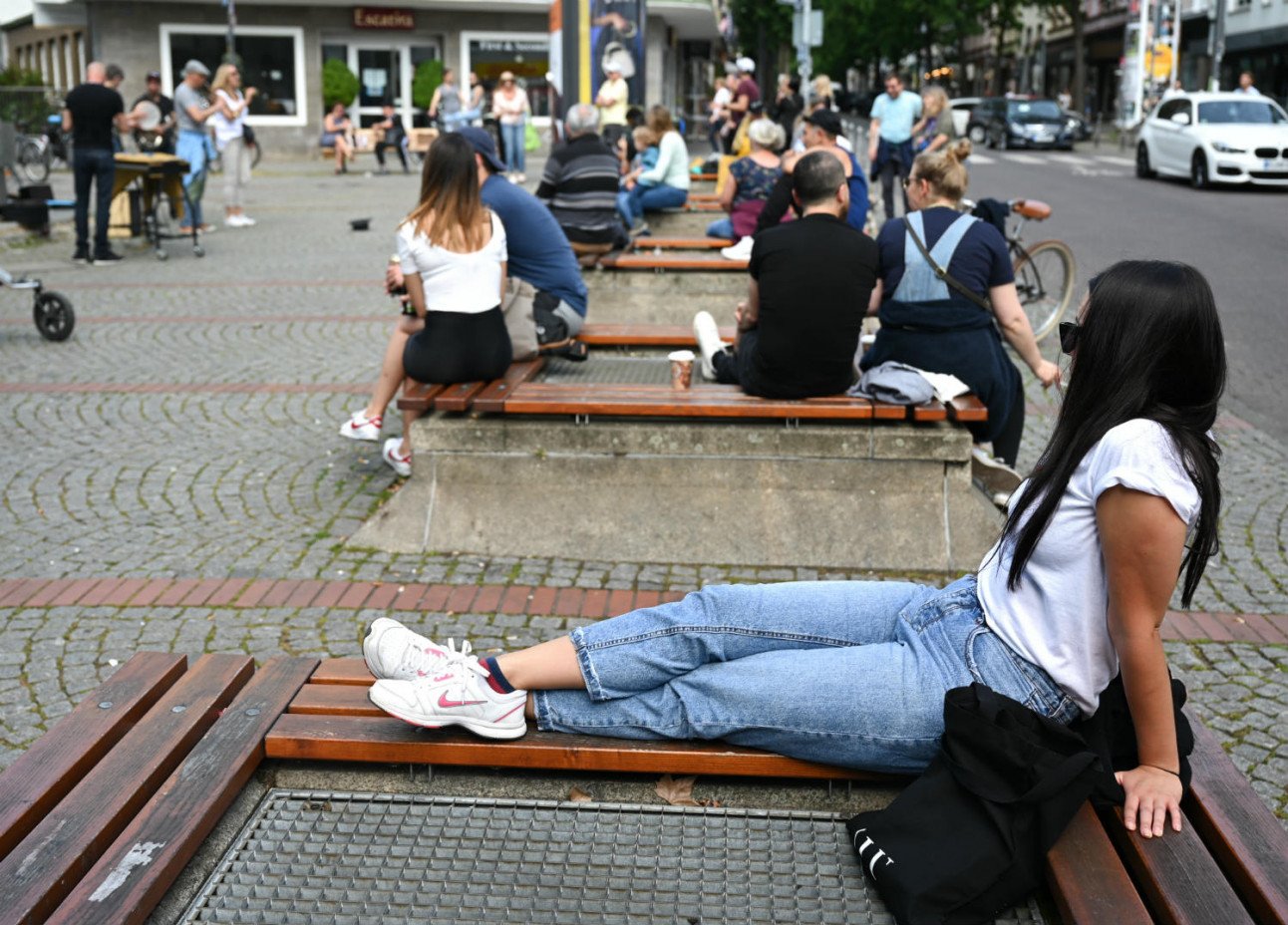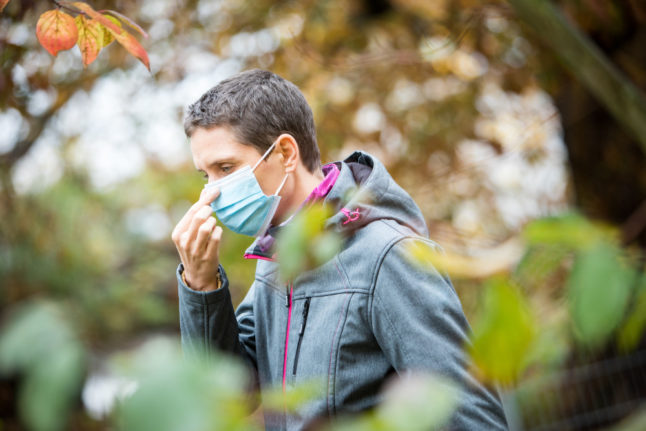Experts have repeatedly said that it's important for Germany’s reproduction number R (R0) to stay below 1.
But it has increased in recent days, prompting concerns that the country will have to reimpose lockdown restrictions. However, on Tuesday the Robert Koch Institute (RKI) for disease control said the R value had dropped again below 1 to 0.94. On Wednesday the number was estimated to be 0.81.
Scientists say fluctuation is to be expected and that the country should be vigilant but not overly concerned about individual days when the R number rises slightly.
We took a closer look at what it all means.
READ ALSO:
- Coronavirus continues to be 'danger for all of us', warns Merkel
- Germany's coronavirus infection rate drops below critical value of 1
What is the R number anyway?
The basic reproduction number is one way of analysing a disease's ability to spread. It represents the average number of people that a person with coronavirus will pass the virus onto.
An R0 (R naught or R zero) of 1 means that each person infected with the virus is passing it on to one other person.
Experts have said that the novel coronavirus, known officially as Sars-CoV-2, has a reproduction number of between 2 and 3, but there is debate and different estimates on this.
Amr Aswad, an evolutionary virologist based at Berlin's Free University told The Local the R value is “a very important number”.
“It's one that's generated through modelling so different models might give you slightly different answers. But fundamentally, as we all know, we need to keep it below 1.”
However, there are other ways to measure how the disease is spreading, such as the number of infections.
“The R0 tells you a lot but it's not the complete picture and it should always be considered alongside the absolute number of infections,” said Aswad.
READ ALSO: Expert Q&A – 'Social distancing will be needed in Germany for a very long time'
At the moment it is estimated that around 1,000 Germans are becoming infected on a daily basis.
This makes the overall situation more manageable – even if the R rate increases slightly – as outbreaks can be handled with testing, contact tracing and isolating people.

People sitting in the sun on Merianplatz in the Nordend district of Frankfurt am Main on May 10th. Photo: DPA
As of Thursday May 14th, there were around 174,000 confirmed coronavirus cases in Germany, according to Johns Hopkins University figures. Of that total, around 7,800 people have died and around 150,300 people are reported to have recovered from Covid-19.
Why do authorities generally want to keep the R rate under 1?
The aim is to keep the R0 under 1 so that the spread of Covid-19 remains under control. If the figure is at exactly 1, the total number of infections should remain at a consistent level.
At lower levels, the spread of the disease slows down considerably. If the reproduction number is higher than one, then the number of cases can increase exponentially.
READ ALSO:
- Rise in coronavirus infections spurs concerns across Germany
- What's the latest on coronavirus in Germany and what do I need to know?
- Watch Merkel explain the delicate challenge of ending lockdown in Germany
What's happening in Germany?
On Tuesday May 12th, the RKI announced in its daily report that the R0 was 0.94 in Germany. The report went on to say that a “renewed upward trend” is not expected in Germany. On Wednesday May 13th the figure was estimated to be 0.81.
The RKI added that the number of cases in Germany was going down. However, there were still clusters of new cases, such as those reported at slaughterhouses, that would have an impact on the R value.
On Monday the RKI had registered an R number of 1.07 and on Sunday it was at 1.1, meaning 10 people with Covid-19 would have infected on average 11 others.
The RKI has warned that for the infection rate to be deemed under control and slowing down, the number has to stay below one. Just last Wednesday, as Germany announced easing of restrictions, the number stood at 0.65.
So what causes the number to spike suddenly?
“What can happen is that local outbreaks – say in a nursing home or a single village or after a big meeting – can artificially make it look like the national R0 is higher because you get this kind of burst in the number of cases,” Aswad said.
“However, I think it takes a couple of days to be able to assess how a particular measurement of the R0 on any one given day will pan out.”
The RKI has said that the data is subject to delays.
READ ALSO: German towns to reimpose shutdowns over coronavirus clusters
Lars Schaade of the RKI also that he would be more concerned if there were R values of 1.2 or 1.3 over a longer period of time.
He also said that the fewer the overall number of infections, the greater the impact of a localised outbreak.
“If the second decimal digit were above 1 that would not yet be critical. But the higher it goes above 1, like 1.2 or 1.3 and over a longer period of time, it would create a situation where we would pay very close attention and think about measures on how to counteract that,” Schaade said.
So what happens if the R number stays below 1?
Aswad said keeping the R0 not below 1 is the aim but it's no cause for a big celebration when that happens.
“We shouldn't pop out the champagne because a couple of days ago it dropped below one and now this is all over – it's a dynamic number and if our behaviour changes then so does the number,” he said.
The important thing is to stick to the social distancing and contact rules in place in Germany to avoid any major increases, said Aswad.
READ ALSO: EXPLAINED – Germany's plan for post-lockdown life with coronavirus
That's been the continued message from scientists in Germany – and what Chancellor Merkel has been repeatedly saying during her speeches.
“The basic facts have not changed,” Merkel said in the Bundestag on Wednesday. May 13th. As long as there is no treatment or vaccine, coronavirus continues to be a “danger for each and every one of us”.



 Please whitelist us to continue reading.
Please whitelist us to continue reading.
Member comments